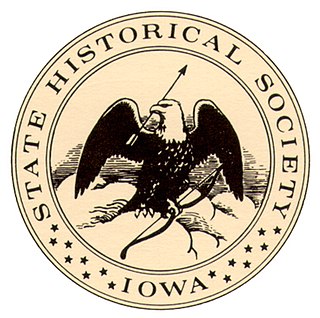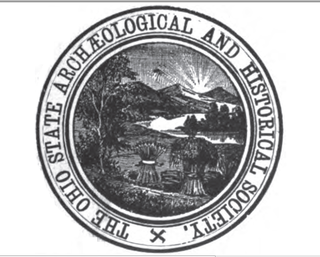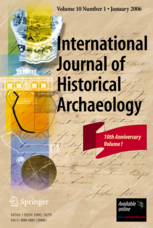
The Levant is an approximate historical geographical term referring to a large area in the Eastern Mediterranean, primarily in Western Asia. In its narrowest sense, it is equivalent to the historical region of Syria. In its widest historical sense, the Levant included all of the eastern Mediterranean with its islands; that is, it included all of the countries along the Eastern Mediterranean shores, extending from Greece to Cyrenaica.

Experimental archaeology is a field of study which attempts to generate and test archaeological hypotheses, usually by replicating or approximating the feasibility of ancient cultures performing various tasks or feats. It employs a number of methods, techniques, analyses, and approaches, based upon archaeological source material such as ancient structures or artifacts.

The historicity of the Bible is the question of the Bible's "acceptability as a history". This can be extended to the question of the Christian New Testament as an accurate record of the historical Jesus and the Apostolic Age.
Antiquity or Antiquities may refer to:

The Great Serpent Mound is a 1,348-foot (411 m)-long, three-foot-high prehistoric effigy mound on a plateau of the Serpent Mound crater along Ohio Brush Creek in Adams County, Ohio. Maintained within a park by Ohio History Connection, it has been designated a National Historic Landmark by the United States Department of Interior. The Serpent Mound of Ohio was first reported from surveys by Ephraim Squire and Edwin Davis in their historic volume Ancient Monuments of the Mississippi Valley, published in 1848 by the newly founded Smithsonian Museum.
Feminist archaeology employs a feminist perspective in interpreting past societies. It often focuses on gender, but also considers gender in tandem with other factors, such as sexuality, race, or class. Feminist archaeology has critiqued the uncritical application of modern, Western norms and values to past societies. It is additionally concerned with switching a perceived androcentric bias in the structuring disciplinary norms of archaeology with a gynocentric bias within the profession.

The Archaeological Survey of India is an Indian government agency attached to the Ministry of Culture that is responsible for archaeological research and the conservation and preservation of cultural monuments in the country. It was founded in 1861 by Alexander Cunningham who also became its first Director-General.
The American Schools of Oriental Research (ASOR), founded in 1900 as the American School of Oriental Study and Research in Palestine, supports and encourages the study of the peoples and cultures of the Near East, from the earliest times to the present. It is apolitical and has no religious affiliation. Susan Ackerman has been President since 2014.
Australian archaeology is a large sub-field in the discipline of archaeology. Archaeology in Australia takes three main forms, Aboriginal archaeology, historical archaeology and maritime archaeology. Bridging these sub-disciplines is the important concept of cultural heritage management which encompasses Aboriginal and Torres Strait Islander sites, historical sites and maritime sites.
The Oxfordshire Architectural and Historical Society (OAHS) has existed in one form or another since at least 1839, although with its current name only since 1972. Its annual publication Oxoniensia has been produced since 1936.
The Australasian Society for Historical Archaeology (ASHA) was founded as the Australian Society for Historical Archaeology in 1970 by Judy Birmingham. Its aims are to promote the study of historical archaeology in Australia.
The Yorkshire Archaeological and Historical Society (YAHS), formerly known as the Yorkshire Archaeological Society, is a learned society and registered charity, founded in 1863. It is dedicated to the study of the archaeology, history and people of the three Ridings of the historic county of Yorkshire. It publishes an annual journal, the Yorkshire Archaeological Journal; and, particularly through its Record Series, it also functions as a text publication society. Its headquarters are in Leeds.
Archaeologia Cambrensis is an archaeological and historical scholarly journal that is published annually by the Cambrian Archaeological Association. It contains excavation reports, book reviews, and historical essays, as well as society notes and accounts of field visits. The journal has included "much valuable material on the manuscripts, genealogy, heraldry, toponymy, folklore and literature of Wales".

The State Historical Society of Iowa (SHSI), a division of the Iowa Department of Cultural Affairs, serves as the official historical repository for the State of Iowa and also provides grants, public education, and outreach about Iowa history and archaeology. The SHSI maintains a museum, library, archives, and research center in Des Moines and a research library in Iowa City, as well as several historic sites in Iowa. It was founded in 1857 in Iowa City, where it was first affiliated with the University of Iowa. As the organization grew in size and collections, it became a separate state agency headquartered near the Iowa Capitol in Des Moines.
The Galway Archaeological and Historical Society was founded on 21 March 1900, at the Railway Hotel, Galway. It promotes the study of the archaeology and history of the west of Ireland. Since 1900, the Society has published 70 volumes of the Journal of the Galway Archaeological and Historical Society. The first 55 volumes of this journal were available for purchase on CD-ROM but have now sold out. Back issues of JGAHS are available through the academic database JSTOR and there are some stocks remaining in hard copy.
Ohio History is a peer-reviewed academic journal covering the history of Ohio and the Midwest. The journal was established in 1887 and published by the Ohio Historical Society. Since 2007 it is published annually by the Kent State University Press. The Ohio Historical Society maintains an online, searchable archive of volumes 1–113, sponsored by the Ohio Public Library Information Network.

Ohio History Connection is a non-profit organization incorporated in 1885 as The Ohio State Archaeological and Historical Society "to promote a knowledge of archaeology and history, especially in Ohio". Until May 24, 2014, the organization was known as the Ohio Historical Society. Ohio History Connection exists to interpret, preserve, collect, and make available evidence of the past, and to provide leadership on furthering knowledge, understanding, and appreciation of the prehistory and history of Ohio and of the broader cultural and natural environments of which Ohio is a part. Its predecessor was founded by Brig. Gen. Roeliff Brinkerhoff in 1875. That society became dormant, and was revived at the urging of Governor George Hoadly in 1885.
Dana Lepofsky is a Canadian archaeologist and ethnobiologist. She is a professor at Simon Fraser University, a former president of the Society of Ethnobiology, and received the Smith-Wintemberg Award in 2018. Her research focuses on the historical ecology of the indigenous peoples of the Pacific Northwest Coast.








